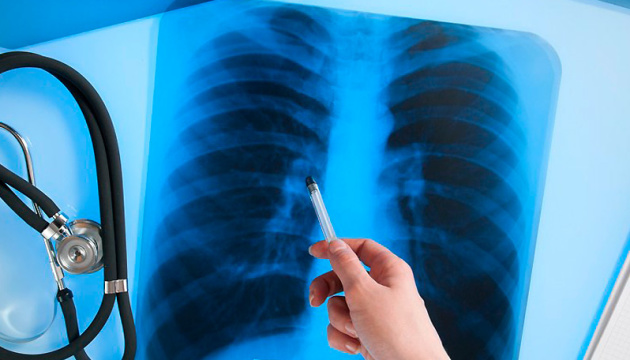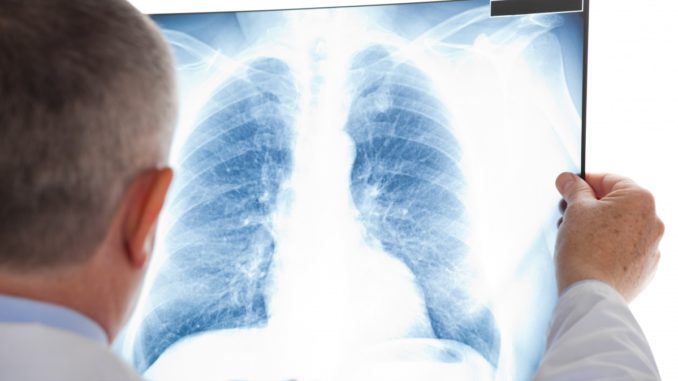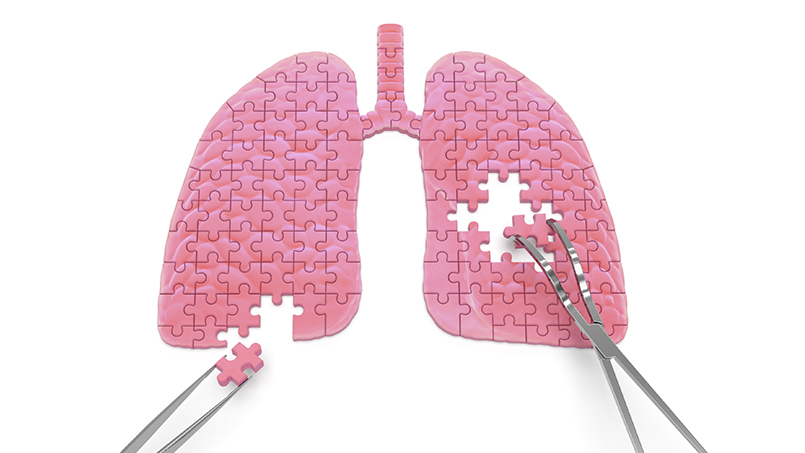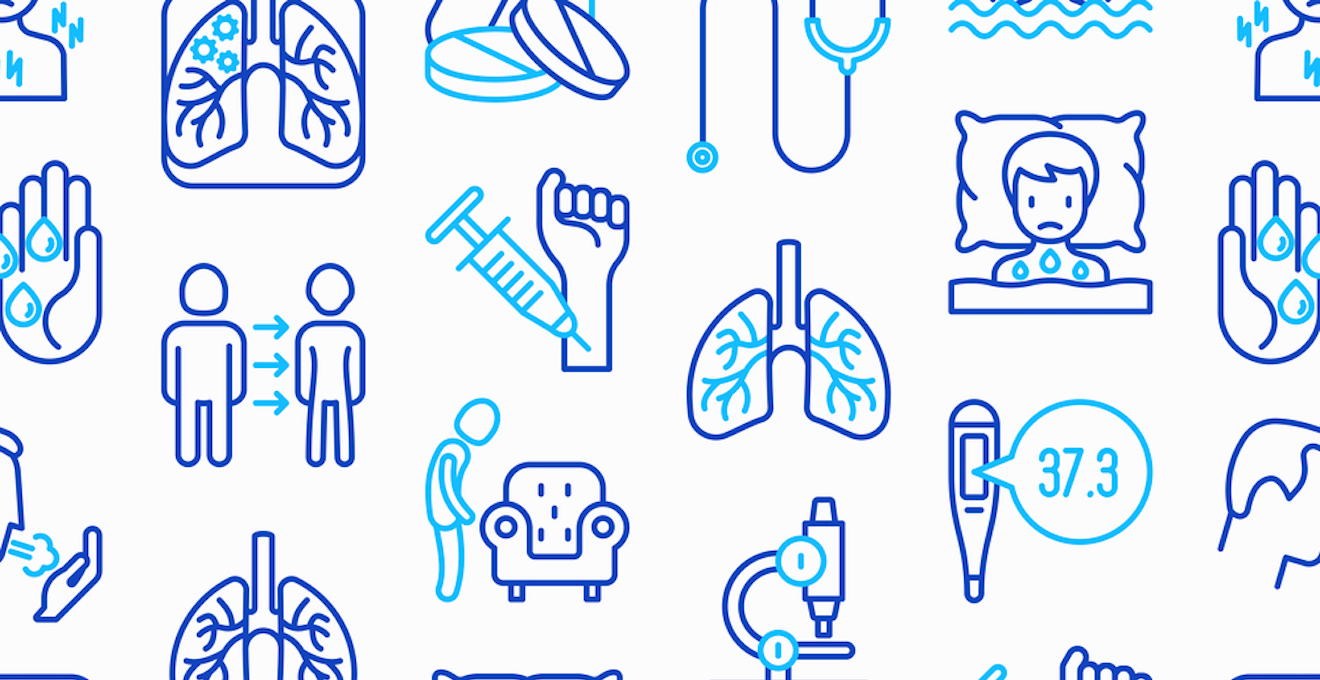Tuberculosis in Ukraine: are we on the threshold of an epidemic?
We dispel myths and tell the living story of a person who has recovered from the disease.

Ukraine is in the top ten countries in the world with the highest rate of multi-drug-resistant tuberculosis and ranks second in the world for the spread of extensively drug-resistant tuberculosis. The World Health Organization provides much more complete estimates of tuberculosis disease than the Ministry of Health of Ukraine. So, according to the Center for Medical Statistics of the Ministry of Health, in Ukraine, there are about 60 cases per 100 thousand population. WHO, in turn, says about 80 cases per 100 thousand.
Vitalii Rudenko, the chairperson of the "Public Movement 'Ukrainians Against Tuberculosis'" Foundation, says that these indicators may even be worse and higher. First, it's connected with the fact that people, relying on the "Stay at home" appeal against the spread of coronavirus infection aren't examined, and second, the official calculation was made for the number of 47, not 42 million Ukrainians. If there are already 37 million of us, or even less, then the statistics may be even higher than 100 cases per 100 thousand.
"I never thought I would ever get TB." Living story
Everyone is at risk of contracting tuberculosis. At the same time, it doesn't matter at what step of the social ladder a person stands, what places they visit, and with whom they communicate. Our hero, who agreed to tell his story, Sasha is a native of Kyiv. He is 28, has his own business, friends, a girlfriend with whom they've been together for more than 5 years. A couple of times a year, Sasha flies to have a vacation abroad, travels the world, and leads a healthy lifestyle, but this summer he received a terrible, and as it turned out little-known diagnosis. It was the coronavirus and the carelessness of doctors that played against it.
Sasha's story begins at the beginning of this summer when his health deteriorated sharply: "I started drinking a lot of water, 5-6 liters a day, running to the toilet 20-30 times," he begins. His masseur, a medical student, advised checking the blood sugar content, and the young doctor's suspicions were confirmed: the norm was 5 times higher than allowed. This is diabetes mellitus, and the situation required immediate intervention. Usually, in such cases, doctors send for fluorography, which in this case showed a problem in the lungs. Later it turns out that Sasha has tuberculosis.
"To be honest, I never thought that I would ever get sick with tuberculosis, I've always thought that this disease isn't so easy to pick up in everyday life. And if it weren't for the doctor to whom I turned for help, I don't know how it would've turned out. After three weeks of unsuccessful treatment for pneumonia, which the endocrinology department suspected, and taking medications for the same disease that the family doctor prescribed, I had to turn to my acquaintances, as trust in the family doctor began to dissolve," the guy tells the story.
A familiar doctor of Sasha's prescribed a list of blood tests that no one had prescribed before. It began with the most common ones: a complete blood count, HIV, and hepatitis. There was also analysis for tuberculosis.
"At that moment I thought, 'What a weird list?' It seemed to me I had inflammation, but the medication wasn't prescribed to me correctly. Well, I think, since she doesn't accept without them, I'll do them. By the way, in this entire list, there was also analysis for covid. In the future, it will still play an important role in this story. I got tested for everything that I was told, but now I understand that I made a mistake, having got tested for everything except tuberculosis on the first day, postponing it until tomorrow. It had to be drawn in another laboratory, and besides, I didn't consider it so important. But the next morning I got tested for it too."
It was overwhelming to wait for the test results. But when they started arriving at the email, Sasha was pleased with every "negative" in the line.
"But then a message comes to Viber, a file is attached and the signature is at the bottom: 'Tuberculosis detected.' Now I understand that when you receive such a diagnosis, every day, every hour is important. But in Ukrainian reality, it seems that no one cares about it. I turned to a friend medic, she sent me to her colleague, who sent me to do a computed tomography of the lungs. It was done promptly, I returned to the doctor, but he said that at 15:00 his working day was already over.
The next day we came again, we give the CT scan to the doctor. We're waiting in the corridor… He comes out and says: 'You still need to be tested for covid, without it, we will not accept you.' Why didn't he tell me about this yesterday?! Thank God, I already had this test result in my hands, I did it with the others. It's important to note here that by the time I had the CT scan, I was already feeling bad. The temperature rose to 39 C. This is a very difficult condition, it's impossible even to sleep: the perspiration is so strong that you doze for the first half-hour, and then you just think how to scoot on the still dry part of the bed…"
But even in this condition, in the hospital, Sasha was sent to make a medical card, in the next building, where he was also asked to make a "voluntary donation." All this is in a dense line of patients.
"This running-around, fortunately, one might say, ends. And the 'housing' in the hospital begins. What kills me above all, in this whole situation that a person comes in a very bad condition when it's very important to immediately start treatment, but since you have to run and look for where to get tested since you learn about new tests by in the course of business, you lose valuable days, and the disease progresses rapidly at this time. Doctors are also in no hurry to tell you about the disease. You can learn more about where it came from and why from YouTube than from them. After I was finally admitted and taken to the department, I finally got to the doctor, who is now in charge. You can already ask him questions and get answers. But it's not necessary anymore," says Sasha.
"Unfortunately, every Ukrainian can get tuberculosis. I knew and communicated with two previous ministers of the government who had been ill with tuberculosis," says Vitalii Rudenko, chairperson of the Public Movement "Ukrainians Against Tuberculosis" Foundation. "Yes, human antisocial behavior can contribute to probable infection, but in fact, everyone is at risk, without exception."
Vitalii Rudenko also pays special attention to the "traditional methods" of treatment for tuberculosis: "The truth is that you must strictly follow the doctor's recommendations, go through the full course of treatment to the end. Treatment of tuberculosis is conditioned only by special antibacterial drugs, and you need to be aware of this."
How is tuberculosis treated?
According to protocols that haven't changed since the middle of the last century, a patient with sensitive (mild) tuberculosis is treated in a hospital for six months. With resistant TB, up to twenty months. Not all patients can withstand a stay in a TB dispensary.
According to statistics from the Ministry of Health, 10% of patients don't start treatment at all. About the same number of people quit treatment at the initial stage, and about 20% of patients with multi-drug-resistant (complex) tuberculosis refuse to be treated for 20 months. Many are afraid of losing their family or job during these 6-20 months. Since treatment is interrupted and patients in the dispensary reinfect each other, only 38 out of 100 patients with a resistant form fully recover. Now in Ukraine, they began to introduce international standards of treatment. The hospital has stopped keeping patients who are no longer infectious. Such patients can come into contact with people and go to work, so they're allowed to go home, where they continue to take medication.
Different models of tuberculosis treatment imply treatment in an inpatient TB facility, on an outpatient basis in a Primary Health Care Centre facility, at home under the supervision of a district TB doctor and a primary health care physician. The doctor makes the decision where it will be better to treat the patient based on a medical opinion and a joint discussion with the patient. In the developed countries of Europe, the outpatient form is more common, but it should be noted that the incidence there is 5-6 cases per thousand of the population.
"There's no tuberculosis epidemic in Europe like we do. They defeated tuberculosis. And in these countries, some more responsible people have created a system in which both the doctor is interested in the patient's recovery, and the patient is interested in completing the course of treatment. The most important thing is to timely detect tuberculosis, establish a diagnosis, and undergo treatment to the end," says Vitalii Rudenko.
Dispensaries treat people with multi-drug-resistant tuberculosis. This is a form of tuberculosis in which the patient sheds Mycobacterium tuberculosis that is resistant to one or more anti-tuberculosis drugs. When such a patient is already undergone abacilarization, they can switch to outpatient treatment. This practice is common among our neighbors, for example, in Moldova, but it requires a special, careful approach and control over the patient:
"This will be true in principle, but most importantly, the patient must complete the treatment to the end. The outpatient completes the treatment under supervision. This can be, for example, a nurse, a physiatric institution, children resting camp room where the patient will come to take medications, or they will take them under video control. In addition, there must be enforcement of infection control," Rudenko explains.
Tuberculosis may not be contagious and can be treated in six months
There's a widespread belief that tuberculosis is an incurable disease, and people who have it or have had it can still be infectious. But it's not true. The only danger is a person suffering from pulmonary tuberculosis, which secretes the causative agent of tuberculosis, and isn't treated. Other people become safe for others after several weeks of treatment and the correct, as prescribed by the doctor, medication.
If a person falls ill with ordinary tuberculosis, then they have nothing to do in the TB dispensary; they aren't contagious, and if the sick person unswervingly follows the recommendations of the doctor and infection control, they'll calmly complete the treatment until they fully recover. It's how our hero is now being treated. Sasha has a non-contagious form of tuberculosis, and in a few months, if he strictly follows the instructions of the doctors, he will be completely healthy.
"The most important thing, I will note once again, is to complete the course of treatment, follow all the doctor's recommendations, maintain the treatment, and don't miss medication. After 6 months, a person becomes healthy, and they have nothing to stay in the hospital. The doctor will conclude the final recovery," says Rudenko.
It should be noted that in Ukraine, among the identified persons with tuberculosis, about 25% are people with multi-drug-resistant tuberculosis. That is, they secrete a pathogen and can infect others. According to Vitalii Rudenko, we observe such sad statistics because now, first of all, we have poor diagnostics; people don't pay attention to the symptoms of tuberculosis, they think it's just a cough, they're irresponsible about their health. Another factor is the bad economy. The head of the Public Movement "Ukrainians Against Tuberculosis" said that, unfortunately, most of our medical institutions, not only dispensaries, don't meet the standards of infection control, and you can get infected with cross-disease anywhere. In fact, in most medical institutions in Ukraine.
Prevention: how to protect yourself?
Monitor your immunity. The risk of contracting tuberculosis, like any other disease, becomes many times higher if the immune system is weakened. Therefore, it's so important to monitor your health, eat a balanced diet, moderately load the body with physical activity, and, which is important especially in the autumn-winter period, not to freeze.
Don't neglect vaccinations. Special medical preventive measures include immunization against tuberculosis and preventive medical examinations. Routine immunization of children with the anti-tuberculosis vaccine is carried out to prevent the development of infection. The child receives the first vaccination on the 5-7th day after birth. Only uninfected children who have a negative Mantoux reaction at the age of 7 and 14 are subject to revaccination. Tuberculin diagnostics (Mantoux test) for children under 18 years old is carried out annually. This is done to determine whether post-vaccination immunity is preserved and establish the fact of infection with Mycobacterium tuberculosis.
Go to fluorography. Fluorography allows you to detect tuberculosis at an early stage when it's easier to treat. During the examination, it's often possible to detect early signs of other dangerous diseases of the respiratory system (for example, lung cancer) and further prevent their progression. Adults and adolescents over 15 years old are subject to fluorographic examination once every 2 years. Military personnel, employees of food industry enterprises, children's institutions, some medical workers are examined more often.
Will the state provide financial assistance if tuberculosis is detected?
Tuberculosis treatment in Ukraine is free, and it has always been like that. Medicines of the first and second line are purchased at the expense of the state budget and the expense of international donor assistance, and the patient can receive them after receiving all the certificates.
However, people with TB have some financial questions. For example, how to get to a medical facility or a doctor in conditions of limited transport connections because of the pandemic? This also includes the purchase of medications, hepatoprotection, to strengthen the immune system. They need to be purchased with your funds, and this requires significant expenses from your budget.
The core of the reform. Reducing the number of TB dispensaries and doctors
The reform began several years ago and continues to this day. We are already approaching its second stage. Last year, everyone was talking about how TB dispensaries would be closed and patients would "run away to infect healthy people"' more than one headline in the media shouted about this, they spoke about it on television. The number of dispensaries is indeed declining. For example, in the Odesa regional center of socially significant diseases in 2012, there were 1625 beds and one children's anti-tuberculosis sanatorium. Today there are 480 beds left, the children's sanatorium was closed. They explain the closure of dispensaries by the transition to the European system of treatment when it's no longer necessary to stay in the hospital for six months and one month is enough. For many, this works: you're treated in a hospital for a month, you overcome the "contagious" stage of the disease, and continue treatment outside the walls of the dispensary. But there are also problems:
"There has been a banal reduction of institutions, including regional children's anti-tuberculosis sanatoriums and specialized Centers for providing medical care to children with active forms of tuberculosis and children at risk of tuberculosis morbidity. That is, for example, children were simply thrown out of these institutions, where they were provided with all the necessary medical services," Vitalii Rudenko comments.
These consequences are quite logical because the reform itself began with violations of the Law of Ukraine "On State Financial Guarantees of Medical Services to the Population," which clearly states that at least 5% of GDP should be allocated for the implementation of the program of medical guarantees, but in fact, there was about 2.9%, the expert says.
"Doctors were cut, 100 and up to 400 in each region of Ukraine. Family doctors, primary care physicians, who must accept the support of tuberculosis patients at the outpatient stage, have concluded agreements with only slightly more than 70% of Ukrainians. And the rest, almost a third of our citizens, who don't have an agreement with a family doctor (for various reasons): what will happen to them, how will they, if necessary, receive the appropriate medical service? That is, based on these disappointing statistics, it can be argued that the first stage of the medical reform is not only incomplete but failed!" says Rudenko.
What's next?
Ukraine, according to Vitalii Rudenko, is on the verge of an outbreak of multi-resistant forms of tuberculosis, as evidenced by statistics, where about 25% of multi-resistant forms are recorded in newly diagnosed patients with tuberculosis.
This problem should be addressed at the state level. The former administration of the Ministry of Health developed an extremely imperfect draft of a new National Targeted Social Program for Counteracting Tuberculosis Disease for 2018-2021, which was submitted to parliament only in 2019, and was rejected as not professionally prepared. The country has been living for more than three years without a nationwide targeted social program to combat tuberculosis disease for 2018-2021, which was developed by the Ministry of Health but was not approved by parliament.
What is the way out? Non-governmental organizations united in the All-Ukrainian Union of Public Organizations "The Coalition of Organizations 'Stop TB Together'" has been working for more than ten years to develop a mechanism for the implementation of a multi-departmental and multisectoral approach in the field of combating tuberculosis in Ukraine. This Concept was publicly presented during a press conference on November 19, 2020, at the Ukrainian National News Agency "Ukrinform" on the topic "Prospects of Ukraine: an infectious epidemic is breathing down the coronavirus's neck, Tuberculosis." The concept is addressed to the President of Ukraine, the National Security and Defense Council, the Prime Minister of Ukraine, central government bodies, the Chairperson of the Verkhovna Rada of Ukraine, profile committees of the Verkhovna Rada of Ukraine, and all interested parties.
Meanwhile, 2021 is drawing to a close. Let's see what will happen next.

























































